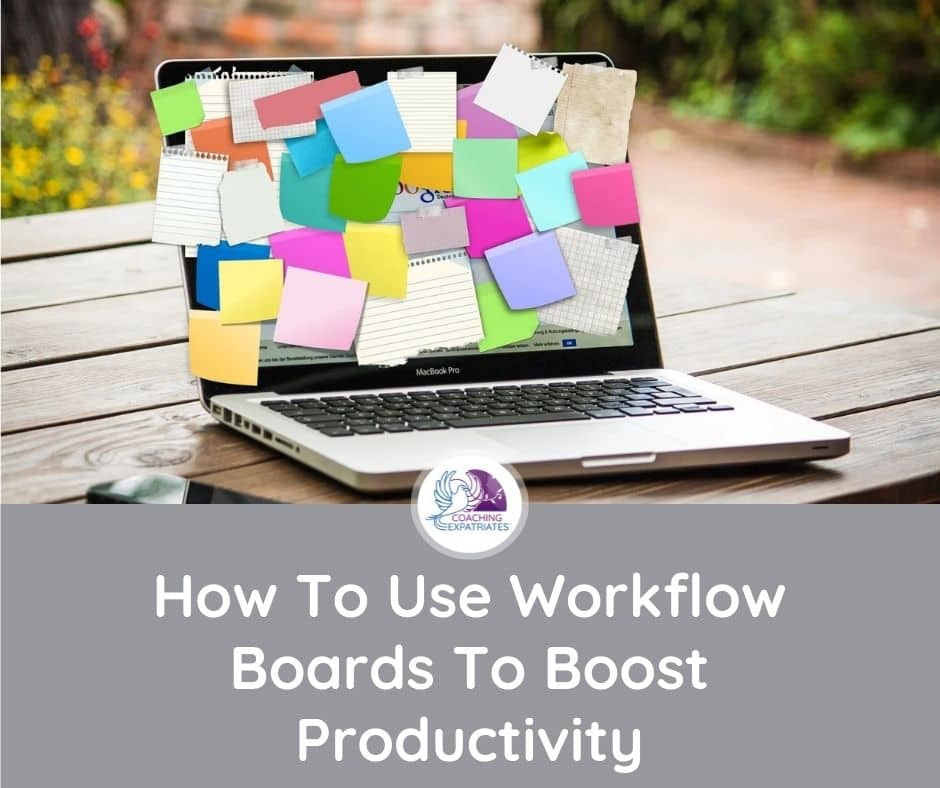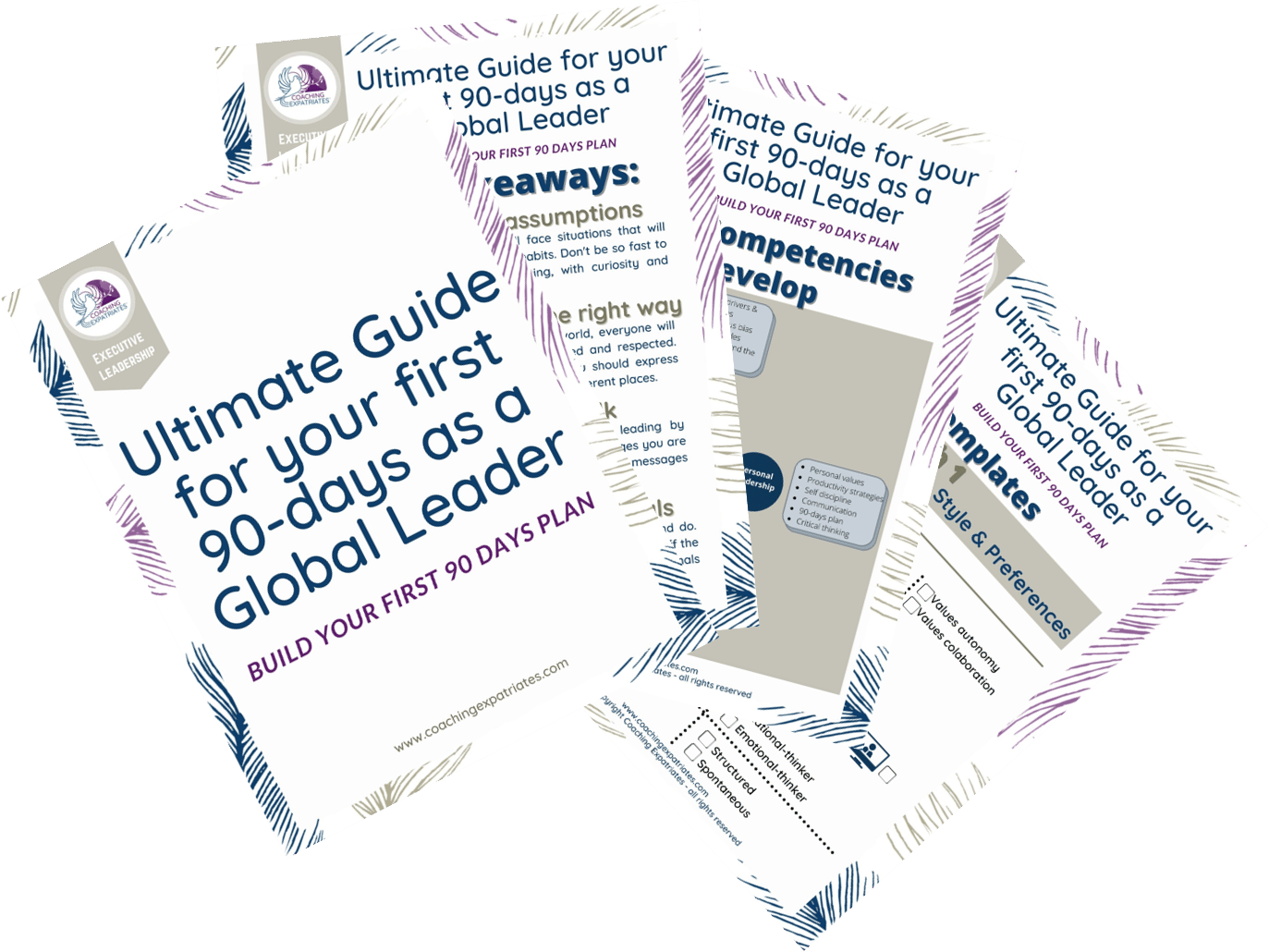If you are considering what could be your next step in getting more organized and boost productivity, you might be thinking that there must be a better way to manage your tasks and everything you have to do than just by using a to-do list. If that’s you, you are in the right place. I want to share how to move from a regular to-do list to a more structured workflow board management. And get to increased productivity levels by doing so.
First, I’d like to discuss why you would make this consideration in the first place. Don’t get me wrong: to-do lists are handy. But they can be quite limited because:
- ) the way you view your to-do is a list – so you don’t get to see what’s going on with your tasks visually
- ) if you are working on tasks that take a little more time to get done or has a few steps, you cannot really manage that task’s progress. You can only see what’s “open” and what’s “done.”
- ) it’s harder to integrate and view peers and team members’ progress on your tasks.
The next step from a to-do list can be a workflow board. A workflow board is basically a place where you place your tasks according to their workflow stage – in a board. And for that, you have first to know what your workflow is.
Workflows can be complex, with many stages, or can be as simple as a 1-2-3:
- Open
- In Progress
- Done
The idea of a workflow is that you will distribute your tasks according to their stage of completion. The productivity gain comes from the increased organization, and from the fact that you manage things more holistically, not just task by task. You can also include in this management powerful helpers like:
- Deadlines
- Reminders
- Flags and priorities
- Assign a name of who should work on that task
- Link that task with ideas, documents, or websites
One of the most used tools lately to do that without breaking the bank is by using Trello. This tool has all these options and much more. Watch this video to see how you could leverage Trello as your workflow board., and boost productivity.
There are a few things that are important when using a board for managing your tasks:
1) Updates: making sure you and everyone working on your board make frequent updates to the board. An outdated board is useless
2) Rules of Engagement: having rules of engagement for using the board is critical. And that’s applicable if you are working alone or when having a shared board with a team. In other words, have a pinned task on the board with a “how to use this board” document or video. In this document, you should define how you want things to be done, such as: how to use the flags; how to use the checklists; when is it acceptable to re-schedule a due date; where to explain the reason for a re-schedule, and so on.
3) Be consistent: if you and your team create and move cards from the board in any way you want, without consistency, the truth is, it will become messy. That’s why the previous bullet is so essential. So make sure you have a way to track that rules of engagement are being followed.
4) Plan your board ahead: thinking about your workflow and how the process should be before start using the board is crucial. You can always adjust your workflow later, of course, but remember what I said about consistency? If you are changing your workflow all the time, how you do things and move things on the board will not be consistent. It will become messy. So think about your workflow ahead and try to stick with it.
5) Manage Expectations: making sure you set up the board upfront, and everyone understands the setup, including how to use the flags, how to use the checklists, and how to use and re-schedule due dates, etc., is critical. So, expanding on bullet 2, after you create your rules of engagement, make sure you have an “onboarding” process for using the board, especially if it’s shared.
6) Analyze your workflow: leverage your board to improve your workflow and process. Is any part of your workflow pilling up with tasks? Investigate that. Are your deadlines being well set? In other words, use the information on your board to make better and smarter decisions. Information is power, and a workflow board provides a wide range of information.
7) Plan workload: use your board and workload information to plan your week or month ahead. Because it is so visual, you can see if any step in the workflow will need an extra hand, what needs to be delegated, and what has the potential to be outsourced. Use the information to help you delegate tasks and focus on certain stages.
When do I recommend moving from a To-Do list to a Workflow board?
Use to-do lists when:
- you are the type of person that has quicker tasks to perform
- you have tasks that take up to 1 hour to get done or chores that can usually be done in one sitting (like going to the supermarket, for example)
- it’s more vital for you to track what there is to be done, rather than its progress
Use workflow boards when:
- you have tasks that take between 2 hours and up to 8-9 hours to complete
- you have tasks that can be divided into smaller subtasks, and you want to track progress
- you want to see the stages of each task in a visual way
- you have activities that go through a workflow or go through stages
- you have certain things to do that do not rely solely on you and need someone else’s review, approval, or work – and you’d like to capture that
- you want to learn where tasks get usually stuck, in a visual way
- you want to collect information from your performance
In a nutshell, we can say that the hashtag for To-do Lists is #completiontracking, and the hashtag for workflow boards is #progresstracking.
As you can see, workflow boards can be mighty and help you organize the things you have to do, track progress, and collect information for analysis. Trello is a top-of-mind free option, but there are many other options available in the market. And once you start using Trello and start becoming more productive and effective, I am positive you will want to consider paid options with advanced features, not only in Trello but also in more powerful tools.
For now, just explore a free version, and see how it works for you. If you liked this post, share it with your friends and peers. Sign up below to receive a productivity and time management tip every week. Please write to us and let us know which productivity tool you like to use the most!







